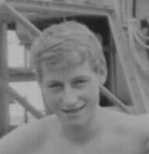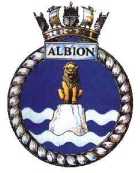 |
Having just got used to finding my way around the Intrepid it was to take even longer to navigate the corridors and passageways of the Albion to find my way to the various Comms Departments, there was the Bridge Wireless Office, Main Signal Office, Lower Transmitter Room, Upper Transmitter Room, Flag Deck. A nightmare!
The Comms Branch messdeck (3D9) was situated near the fo'csle, nice and handy for the forward heads and showers but during rough weather (when the fo'csle was shut) it was quite a trek thru the main dining hall to reach them.
I enjoyed my time in the Far East and we had many pleasant runs ashore, visiting countless places, my favourite being Perth, Western Australia.
Alas, all good things must come to an end and the ship arrived back in Portsmouth in August 1969 to begin a six month refit in dry dock. During this period we had the pleasure of being billeted on HMS Centaur and I also visited HMS Mercury to take my RO2's exam (having failed it at RNWS KRANJI whilst out the Far East. Too much TIGER beer I fear!)
Having finished the refit it was off to Portland for a major shake-up followed by a few major exercises in the north of Scotland and a couple of visits to mainland Europe including Bremerhaven and Rotterdam. Then it was off to the Med for three months although the only places we visited were Gibraltar, Malta and Athens.
After nearly 2 and a half years onboard the Albion it was time for my first draft to a shore-base, HMS Warrior, Northwood. |





